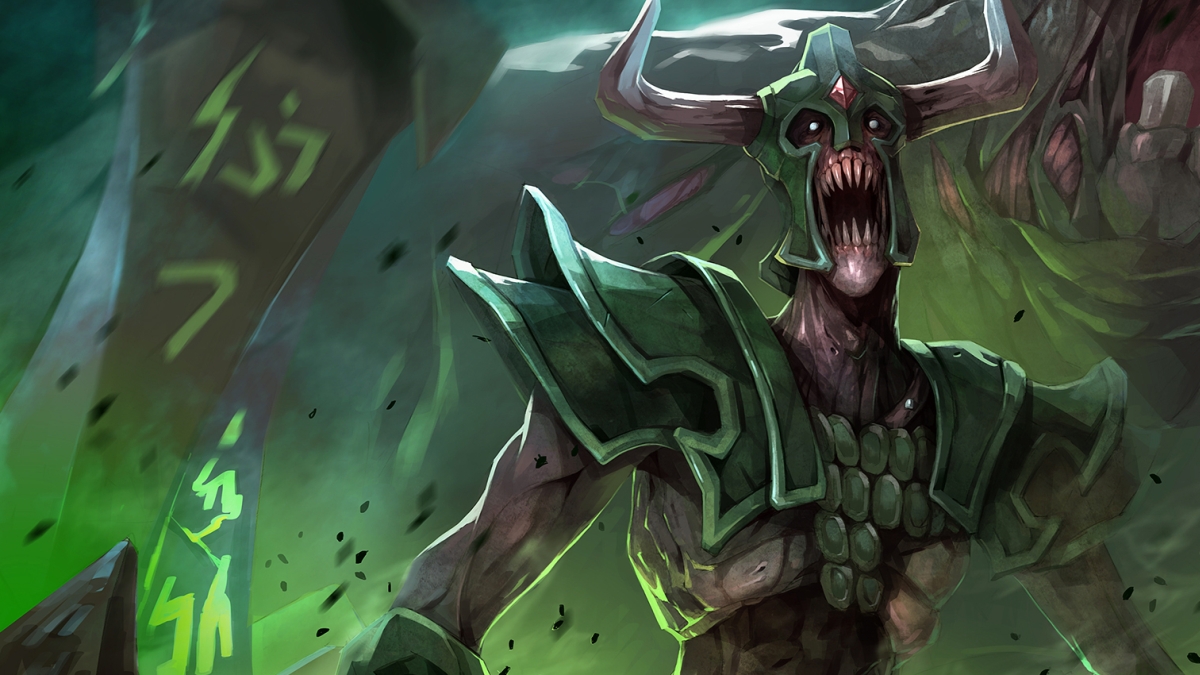Learn to (out)play: thoughts on skill growth and Dota

Every week, Chris documents his complex ongoing relationship with Dota 2, Smite, and wizards in general.
Last weekend I spent almost exactly two and a half hours in the International Open Qualifiers. I wrote beforehand that I'd have been delighted to get through the first round, and technically that's what happened. Technically. As it happened, our first round opponent didn't show up and we waited, waited, waited for the game that'd determine our next match to finish. It started late and ran long, meaning that we were sat on Skype for almost two hours building KSP rockets and tinkering with Invisible, Inc. Eventually, we got to play. Then, soundly outmatched, we lost in under half an hour.
I'd hoped to be able to roll into this week's column with a better story than that, but that's more or less the extent of it. We didn't acquit ourselves terribly, but it turns out that if you lose all three lanes and they have a draft that can teamfight early and push then it's pretty hard to fight your way back into the game.
We were disappointed but neither particularly surprised nor particularly disheartened. We had some very specific shot-calling and strategic problems to solve, but we understood them and they seemed solvable. A similarly positive line of thought was this: that we'd lost but understood why, knew that our opponents had much more experience of the game than us but could also see the road from where we are to where they are. And so on. There's comfort in seeing your failure in these granular terms, in picking out the little things that went well and appreciating the skill it took to make other things go so badly.
That's the note we ended on. Since then, I've been thinking about a lot. I've started to suspect that, in reality, that sense of a linear course between you and a superior opponent is actually pretty misleading.
For one thing, your ability to parse why an opponent has been successful is very much grounded in your own experience of the game—in the sorts of things you value, and therefore in your own conception of how you win. When you watch somebody play well and think 'I could do that', you're probably focusing on the aspects of their play that you already understand—i.e, exactly the stuff you don't need to learn.
That's a pretty disheartening thing to realise, particularly because it means that raw practice isn't a catch-all solution to an experience deficit. It's not enough to dump time into the game: you have to learn to invest that time into the right places. With that in mind, then, it's useful to identify the way in which the nature of skill changes as players become more experienced. Not 'improved'—changed.
I found this chart, by Redditor Ave-Nar, pretty interesting. Here's the original thread. It illustrates the changes in hero win rates both across different patches and across multiple skill levels—normal, high and very high in this case. There are some really interesting patterns, and these patterns tell us not just about the heroes themselves but how they relate to player skill.
The biggest gaming news, reviews and hardware deals
Keep up to date with the most important stories and the best deals, as picked by the PC Gamer team.
Take, for example, Necrophos in 6.82 and Omniknight in 6.84. Both show a high winrate that declines linearly as you progress from normal to very high—a downwards diagonal slant. Although they are played in different positions, both heroes also have a similar impact on the game (tremendous teamfight sustain and laning presence) and are, crucially, straightforward to play. An Omniknight only needs to press R at the right time to completely tip a pub-level teamfight where half of the players have locked physical damage carries. A sub-par Necrophos can get away with spamming Q and using R to steal everybody's kills—the fact that he is also healing his allies and extending enemy respawn times as he does it is a bonus that the normal skill-level player doesn't really need to think about too much.
As a result, winrate declines with skill—because better players know how to work or counterpick both of these heroes, and neither of them have very many options when they've been outmaneuvered or outplayed. That linear decline demonstrates something basic: that as players get better, they get better at denying the enemy an easy way to win.
Contrast with Undying in 6.84. His pattern is similar to Troll Warlord in 6.83—lowest winrate in normal skill, highest in high skill and then a dip down again in very high skill. This inverted 'check' shape is really interesting. Undying in particular is a hero that requires a bit of expertise to use properly. You need to know how to gauge the impact of stolen strength on an enemy. You need to understand how to position a tombstone, and particularly how the many recent changes interact with his skillset—I still encounter people trying to counterpick Undying with Bristleback who look surprised when the quills do nothing to the zombies. In short, you don't need to be a great player to use Undying effectively but you need a fundamental understanding of how Dota works and how it has changed over time.
You also need to understand drafting, to a degree. You need to be able to both pick a partner for Undying and know where to lane him to do the most damage to the enemy's laning phase. All of this is what signifies a high skill player—and explains why Undying's winrate takes a huge leap between the two brackets.
Then, in very high, he falls off. With good reason—the best players can do all of the above and understand that their opponent is also doing all of the above. If an Undying pick is likely, a very good player will have planned for it. The process of getting better at Dota—as with other competitive games—is one of gradually transitioning from a focus on you to a focus on them.
Put it another way: as skill increases, player aspirations change. This is a generalisation, but the trend is for lower-level players to enter a game with a plan that they intend to execute. Land a lot of Pudge hooks. Play Void—whatever it is. They understand this plan in and of itself, they understand the hero and the items they need, but the plan doesn't take into account the enemy. Thing is, the enemy isn't thinking about them either. Two self-focused plans smack into one another and 50% of the time yours comes out on top.
Then comes outdrafting, whether by directly countering picks or simply by playing the meta. This involves a better understanding of the game and some sense of what the enemy's strategy might be, but it's still ultimately a series of decisions that are focused on the self. The composition of most pub drafts is, I think, the product of these two forces acting against each other: someone vanity picks, so somebody does an obvious counter-pick, and so on, where actual team-wide synergy is a rarity.
Improvement, then, is a matter of moving steadily away from understanding what you want to do—or what you might be able to do—and towards what your opponent wants to do. Towards figuring out what their dream looks like, and breaking it. It's never that simple, of course—if I understood everything that went into making that work, I wouldn't be shit at Dota. But thinking along these lines is useful because it gives you the shape of a solution if not the steps to get there: getting there is, after all, is a matter of time. It's not enough to look at an opponent and think 'that could be me'. When you have that extra experience, you don't want to want to be them. You want to look at the way they play and see all of the holes.
To read more Three Lane Highway, click here.
Joining in 2011, Chris made his start with PC Gamer turning beautiful trees into magazines, first as a writer and later as deputy editor. Once PCG's reluctant MMO champion , his discovery of Dota 2 in 2012 led him to much darker, stranger places. In 2015, Chris became the editor of PC Gamer Pro, overseeing our online coverage of competitive gaming and esports. He left in 2017, and can be now found making games and recording the Crate & Crowbar podcast.


